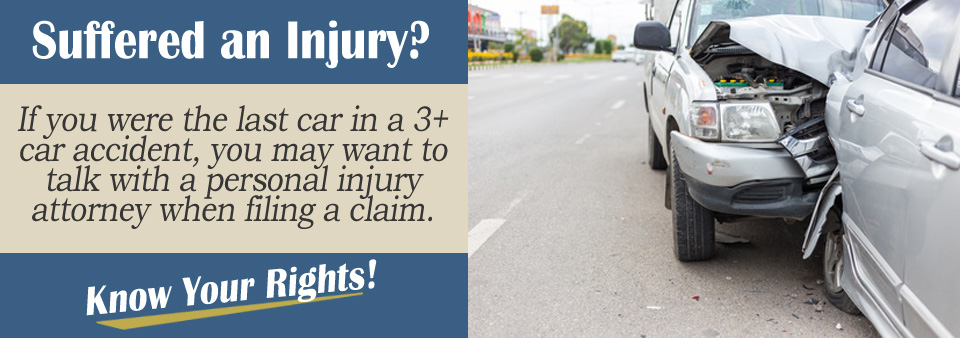If you were the last car or the back car in a three plus car accident, you are probably wondering how to file a claim to recoup your damages. There are several factors that come into play with such crashes. While often, the last car is chalked up at fault, there are situations where that might not be the case. Depending on the state where the crash occurred, the laws regarding such accidents, and the damages to the vehicles, the car in front could be to blame for the accident that occurred.
As an example, if the front car slammed its brakes without warning, then the crash could have resulted because the others didn’t have adequate warning or time to stop. However, often the blame is chalked up to the car in back for not being able to stop in time and for following too closely.
Determining Negligence in a Chain Reaction Crash
A chain reaction crash happens when three or more vehicles slam into one another in a series of rear-end crashes that result primarily because of the force of the first collision shoving other vehicles into each other. As an example, the second car might rear-end the first car. Because this happened without warning, the third car might then strike the second car. The fourth car, or back car, comes along and then is unable to stop without rear-ending the third car, which has already come to a stop in the road.
Chain reaction crashes could involve more than one driver who is acting negligent is one manner or another. There are four elements to negligence – duty, breach, causation, and damages. If you can prove negligence, you can have a successful personal injury claim.

The Challenge of a Personal Injury Claim in Chain Reaction Crashes
Because a chain reaction crash might involve more than one driver acting in a negligent way, filing a personal injury claim might be challenging. There could be many different challenges that are faced, including determining fault, when you are pursuing a claim after a chain reaction crash. If more than one driver was to blame, you will have to prove each driver’s share of liability.
A driver who is determined to be following too closely then rear-ends the lead car will almost always be considered negligent and be liable for damages. However, if a car in front suddenly slams its brakes without warning or is stopped in the middle of the road in a blind curve, that driver might be considered at fault for the entire accident. Make sure an accident report is completed. Your personal injury attorney will do a more thorough investigation and look at the overall picture.
Consult With A Personal Injury Attorney
If you have been involved in a chain reaction accident, you should consult with a personal injury attorney. Filing a claim if you were the last car in a three plus car accident can be a challenge. Complete the Free Case Evaluation Form on this page to get your case reviewed for free!